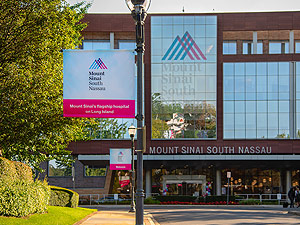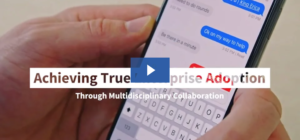Sometimes, the biggest disruptors of everyday clinical workflows are the seemingly small things that balloon into big problems.
Tracking down a coworker, maybe. Missing details during a handoff. Alarm fatigue. Or consider, for example, jams at high-traffic areas like the nurses’ station: If everyone gathers there for outbound calls, it can frustrate staff and impact care delivery.
These and other concerns have driven health systems nationwide to rethink their approach to clinical communication and collaboration (CC&C)—and today, we’re sharing an example of one such organization’s journey: Mount Sinai South Nassau (MSSN).
As a 455-bed acute care teaching hospital in Oceanside, New York, MSSN sought a CC&C solution that could help them optimize workflows and transform inefficiencies while allowing the established health system to leverage their existing infrastructure.
Up for the challenge, Mobile Heartbeat’s MH-CURE® checked all those boxes and then some. Here’s MSSN’s story, and what you can learn from their experience.
Identifying Challenges and Needs
The first step of any CC&C transformation is to understand systemic pain points and needs, however small they might seem. For MSSN—who had previously and unsuccessfully tried adopting another vendor first—those challenges had become abundantly clear.
With a high volume of outbound calls at the nurses’ station, MSSN aimed to reduce those and instead displace them to mobile devices. That way, traffic around the nurses’ station could disperse, while helping staff cut down on the time spent looking for colleagues.
MSSN also sought a platform that could integrate and interoperate with several coexisting systems, including Stryker®. In particular, they were attracted to Mobile Heartbeat’s willingness to work with their current infrastructure. Instead of recommending a costly and complex overhaul—something MSSN didn’t want or need—Mobile Heartbeat could build on and enhance the system’s present configurations.
“Mobile Heartbeat was able to accommodate integrations with our existing infrastructure. This allowed our users to seamlessly leverage the tools that they were already used to, which helped contribute to more excitement and adoption,” said Robert Korrow, Director of Infrastructure Services at MSSN.
A Pilot Process to Test It Out
MSSN and Mobile Heartbeat tested MH-CURE with an initial pilot across a 29-bed medical-surgical nursing unit. Petty quickly, things started to improve: Communication lines opened, clinical coordination became more efficient, and that jam at the nurses’ station? Dispersed.
With the value seen during the brief pilot, MSSN had the confidence to move forward with an enterprise-wide adoption of MH-CURE.
Takeaways for a Successful Implementation
With any enterprise change, getting buy-in from multiple stakeholders is essential. MSSN, for example, engaged clinicians and operations staff in advance—well ahead of MH-CURE’s deployment—to assess those groups’ interests, needs and preferences for a CC&C solution.
The expansive team alignment during the pilot and countdown to go-live in turn contributed to a smooth and successful implementation. After all, because MH-CURE works best at scale and with multidisciplinary adoption, having that buy-in makes all the difference for an effective technology transition and eventual uptake among users.
Together with MSSN’s internal stakeholders, Mobile Heartbeat was also very involved in the go-live process: Our team came onsite early on to conduct Clinical Workflow Assessments (CWA), a comprehensive discovery process which involved 60 different groups and departments. That effort informed our understanding of MSSN’s clinical workflows and facilitated a more seamless deployment.
MSSN’s enterprise go-live with MH-CURE happened on June 20, 2022—and from start to finish, took just two weeks. Since then, the health system has seen an average of 4,000 monthly active users and nearly 1 million communication events sent on the platform. More broadly, MSSN has noted new efficiencies in its clinical workflows, as well as fewer instances of the dreaded “staff scramble” to find missing coworkers.
“We wanted a consistent communication system across our hospital and Mobile Heartbeat delivered above and beyond. After the initial implementation was complete, we saw immediate results. For example, we were able to reduce discharge times by 30 minutes, on average, for endoscopy procedures which is a huge benefit for staff satisfaction and patient care,” Matt Runyan, Chief Information Officer at MSSN, said.
Looking to address clinical workflow disruptors within your health system? Download our comprehensive CC&C implementation guide, packed with everything you need to get started.





